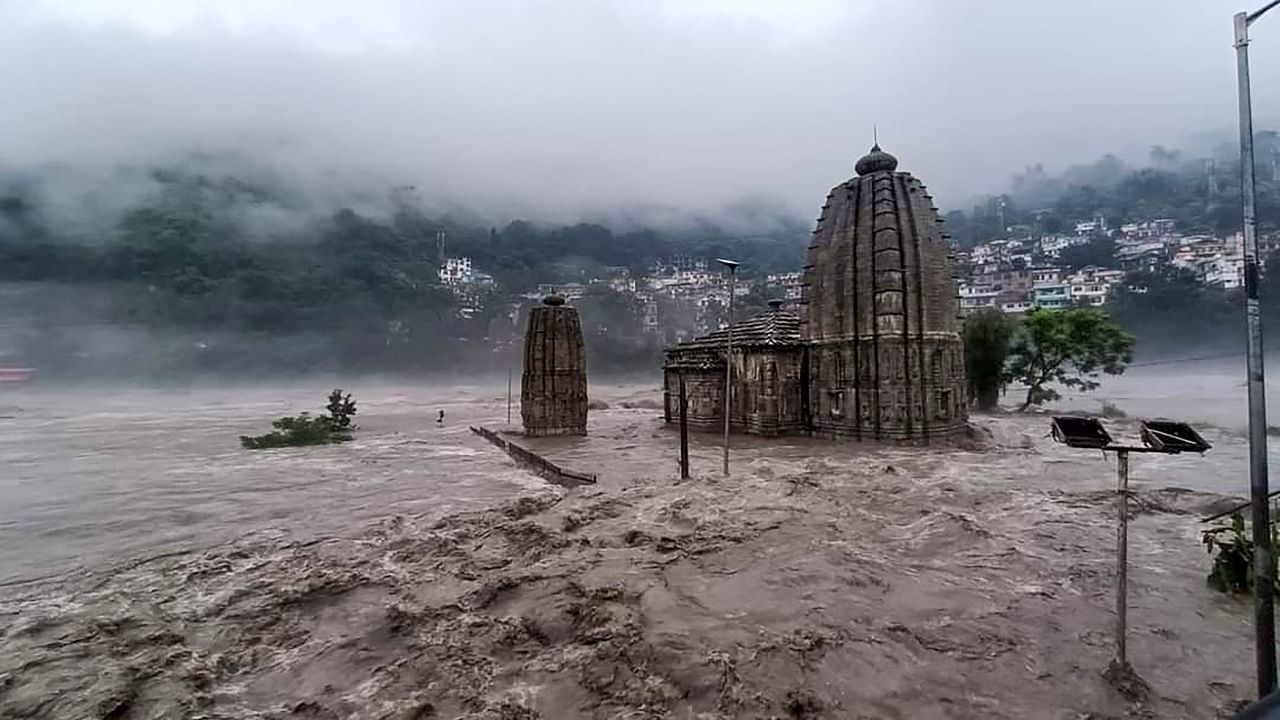
Heavy rain pummelled large tracts of north India on Sunday killing at least 15 people, causing flash floods that washed away roads and landslides in the hills while triggering flood like scenes in cities and towns including Delhi where the traffic was thrown out of gear.
Thanks to an interaction between the south west monsoon and a western disturbance, the sky opened up in many parts of north India on Saturday and continued for the next 36 hours resulting in record-breaking rains in Chandigarh, Ambala, Delhi and many other cities.
Delhi’s Safdarjung airport, the base station for the capital, recorded 153 mm of rainfall in the last 24 hours (between 830 hours of July 8 and July 9), which is a 40 year record. The last time Delhi received so much rain in 24 hours was on July 25, 1981 (169.9 mm) – a few months before the Asian Games.
In the last 24 hours, Chandigarh recorded more than 320 mm of rain – the maximum after 22 years – while Ambala got 224 mm of rainfall. As the pounding continued on Sunday, Chandigarh received more than 63 mm of rainfall till 1730 hours whereas Ambala logged 42 mm more, said a weatherman at the India Meteorological Department.
For the second consecutive day, Delhi received more than 100 mm of rain with 106 mm of precipitation recorded at Safdarjung till 1730 hours on Sunday. It registered 130 mm rainfall – the highest since 2003 – on Saturday. The meteorologists do not immediately recollect when Delhi recorded two consecutive days of more than 100 mm rainfall.
Though a moderate rainfall has been predicted for Monday, Delhi Chief Minister Arvind Kejriwal announced closure of the schools for a single day. “After so much rain during the last two days, even a moderate rain on the third day over Delhi is also a matter of concern,” said a meteorologist.
Railway services have also been hit. The Northern Railways said it has cancelled around 17 trains and diverted around 12 others.
Heavy downpour was witnessed in certain areas of Jammu and Kashmir, Ladakh and Himachal Pradesh, which saw 14 major landslides, 13 flash floods and closure of 700 plus roads in the past 36 hours. In the last 24 hours, the hill state received 1193% excess rainfall.
In neighbouring Uttarakhand, three pilgrims drowned in the Ganga after their jeep fell into the river amid a landslide near Gular on the Rishikesh-Badrinath National Highway. Uttarakhand received 144% excess rain, but its neighbouring areas were battered by high-intensity rainfall.
Punjab registered 1151% excess rainfall in the past 24 hours, whereas it 901% more in Jammu and Kashmir (296 mm rainfall in Kathua in 24 hours) and 788% in the meteorological subdivision of Haryana, Chandigarh and Delhi.
From Monday onward, the rainfall intensity is likely to decline in north-west India but is likely to rise in the east and north east.
The bountiful rains in the first eight days of July have bridged the rainfall deficit for the entire country, because of which the cumulative monsoon rainfall (243.2 mm) is now two per cent above the normal of 239.1 mm. But there are regional variations.
While the eastern and northeastern region recorded a deficiency of 17%, north India witnessed 59% per cent excess rainfall. Central India recorded an excess of 4%, while the deficiency in south India now stood at 23%.
